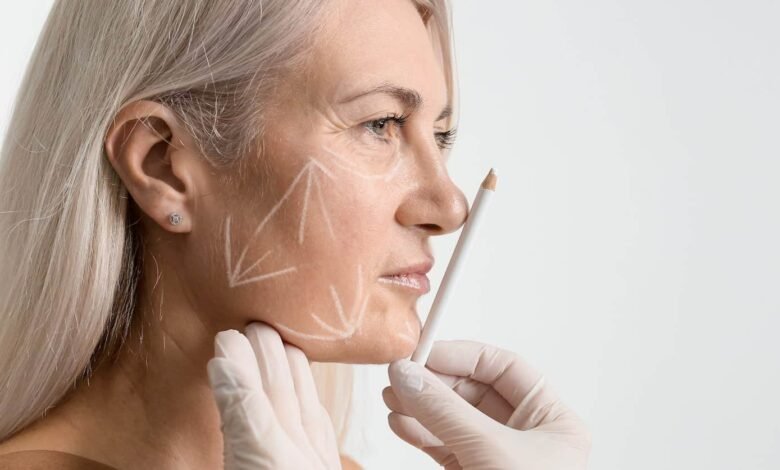
Facelift in Abu Dhabi are one of the most popular cosmetic surgery procedures globally, and Abu Dhabi is no exception. As people seek ways to restore a youthful appearance, misconceptions about facelifts often arise, creating confusion and uncertainty. Understanding the truth behind these myths can help you make an informed decision about whether a facelift is the right choice for you.
Here are some of the most common myths about facelifts in Abu Dhabi, and the realities behind them.
Myth 1: Facelifts Are Only for Older People
One of the most widespread myths is that facelifts are only suitable for individuals of advanced age. While it’s true that facelifts are often associated with older adults, younger people can benefit from the procedure as well.
Reality:
Facelifts are suitable for a wide age range. People in their 40s and 50s who start noticing sagging skin, jowls, or deep wrinkles may consider the procedure to address early signs of aging. In some cases, facelifts can even be done to correct genetic factors that cause premature skin aging or sagging.
In Abu Dhabi, many individuals choose facelifts not only to counteract the effects of aging but also to enhance their facial structure, achieving a more defined and youthful appearance.

Myth 2: A Facelift Will Give You a “Tight” or “Frozen” Look
Another common misconception is that facelifts leave individuals with a tight, unnatural, or “frozen” appearance. This myth often stems from seeing poorly executed facelifts or older techniques.
Reality:
Modern facelift techniques have advanced significantly, allowing for a natural-looking result. Skilled surgeons in Abu Dhabi use methods that lift and reposition underlying tissues, rather than just pulling the skin tightly. This ensures the face looks rejuvenated, not overstretched, with minimal visible scars and a refreshed look that still retains natural expression.
Surgeons today focus on restoring youthful volume and improving facial contours, rather than merely tightening the skin. This creates a more balanced and harmonious result.
Myth 3: Facelifts Are Extremely Painful
Some people avoid getting a facelift because they fear the procedure will be excruciatingly painful and difficult to recover from.
Reality:
While a facelift is a surgical procedure, the pain is generally minimal and manageable. Most patients report feeling discomfort rather than severe pain during the recovery period.
Surgeons in Abu Dhabi use anesthesia during the procedure to ensure patients are comfortable throughout. Post-surgery pain is usually controlled with prescribed medications, and most patients can return to their normal activities within a couple of weeks, although there might be some swelling or bruising initially.
Myth 4: A Facelift is a One-Size-Fits-All Solution
Some people believe that a facelift can solve all their facial aging concerns in one procedure. However, facelifts are not a universal fix for every cosmetic concern.
Reality:
A facelift addresses specific signs of aging, primarily sagging skin, jowls, and deep creases around the mouth and chin. However, it doesn’t correct issues like eyelid sagging, brow ptosis, or fine lines and wrinkles on the forehead or under the eyes. In fact, many patients combine a facelift with other procedures, such as eyelid surgery (blepharoplasty), brow lifts, or non-surgical treatments like Botox or dermal fillers, to achieve comprehensive facial rejuvenation.
Each person’s needs are unique, and in Abu Dhabi, surgeons tailor their approach to suit individual goals and anatomy.
Myth 5: Facelifts Require Extensive Downtime
Many people avoid a facelift due to concerns about long recovery times that may impact their ability to work or socialize.
Reality:
The recovery time for a facelift is generally much shorter than many people expect. Most patients can return to work and normal activities within two to three weeks, although strenuous exercise and certain activities should be avoided for a few weeks to allow proper healing.
Swelling and bruising typically subside within the first 7–10 days, and many patients feel comfortable enough to go out in public with a little makeup to conceal any remaining redness. Surgeons in Abu Dhabi provide clear aftercare instructions to ensure a smooth and quick recovery process.
Myth 6: Facelifts Are Only for Women
Facelifts are often associated with women, leading many men to believe that the procedure isn’t meant for them.
Reality:
Men can also benefit greatly from facelifts, and the demand for cosmetic procedures among men in Abu Dhabi has been steadily increasing. Male facelifts tend to focus on more subtle results, avoiding overly dramatic changes that might appear unnatural for a male face.
In fact, a facelift can help restore a more youthful, energetic appearance for men, and the procedures are tailored to respect the natural contours of a man’s face. Abu Dhabi surgeons have experience with both male and female patients, ensuring that the treatment is customized to each individual’s needs.
Myth 7: The Results of a Facelift Are Permanent
Some people think that once they undergo a facelift, the effects will last forever, without needing any maintenance.
Reality:
While facelifts provide long-lasting results, they do not stop the natural aging process. Over time, the skin and underlying tissues will continue to age, and while a facelift can turn back the clock, it won’t prevent future wrinkles or sagging.
Typically, facelift results can last anywhere from 5 to 10 years, depending on factors like age, skin type, lifestyle choices, and how well you take care of your skin. To maintain a youthful appearance, many people opt for maintenance treatments such as Botox or dermal fillers in combination with their facelift.
Myth 8: Facelifts Are Only for Cosmetic Reasons
Some people think that facelifts are solely about vanity and enhancing one’s appearance. While this is a common reason for choosing the procedure, it’s not the only one.
Reality:
In some cases, facelifts are done for functional reasons. For example, a facelift can help individuals with sagging skin around the neck or jawline that might impair their vision or cause difficulty with facial movements. The procedure can improve both aesthetic appearance and quality of life by addressing these functional concerns.
Conclusion
Facelifts in Abu Dhabi can offer significant aesthetic improvements, but it’s essential to separate fact from fiction when considering this procedure. Dispelling the myths surrounding facelifts—such as the ideas that they are only for older people or that they cause a “frozen” look—helps potential patients make more informed decisions.



